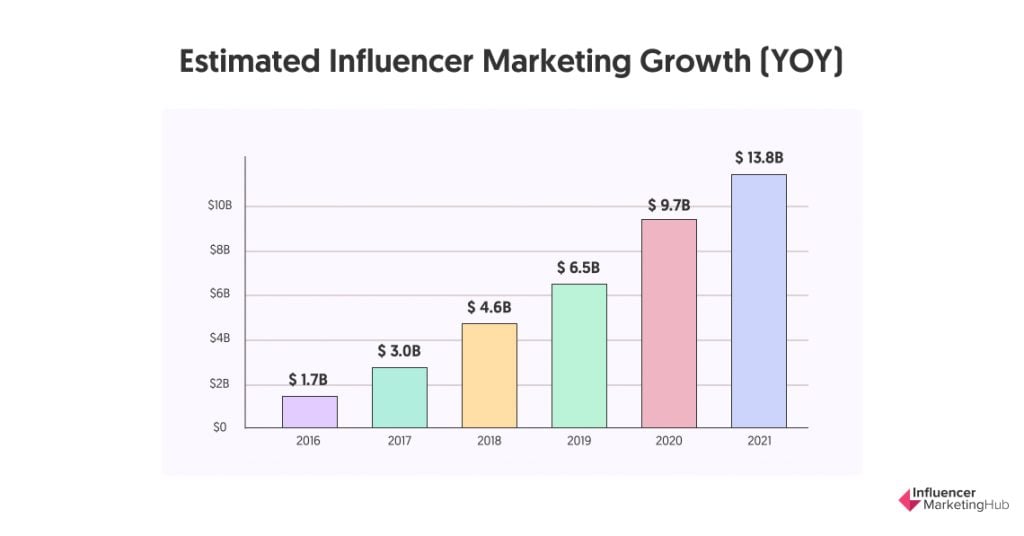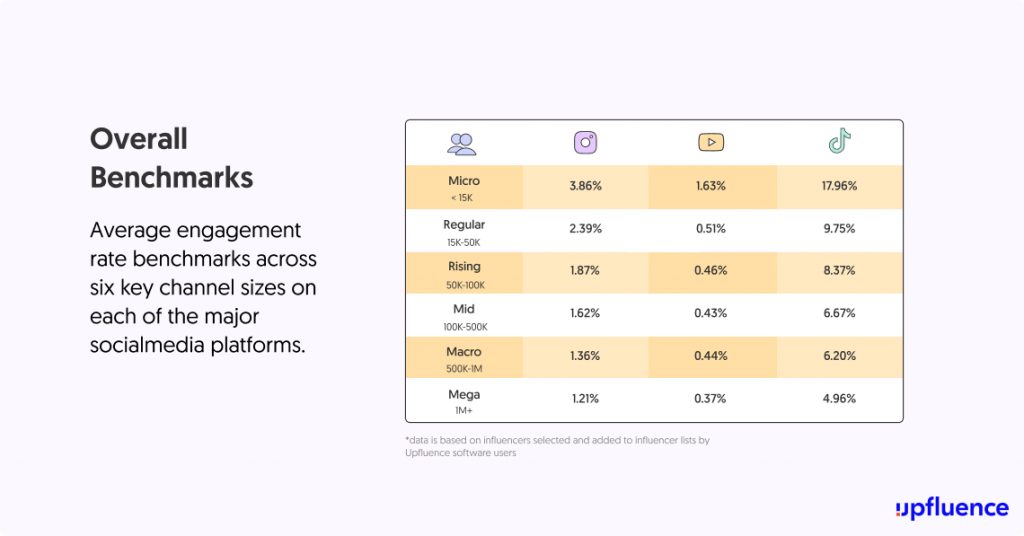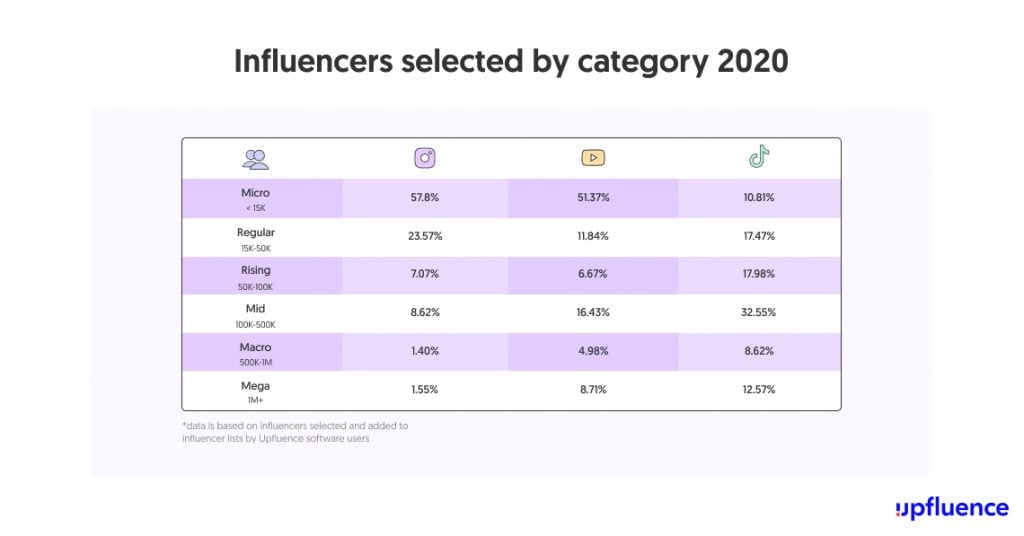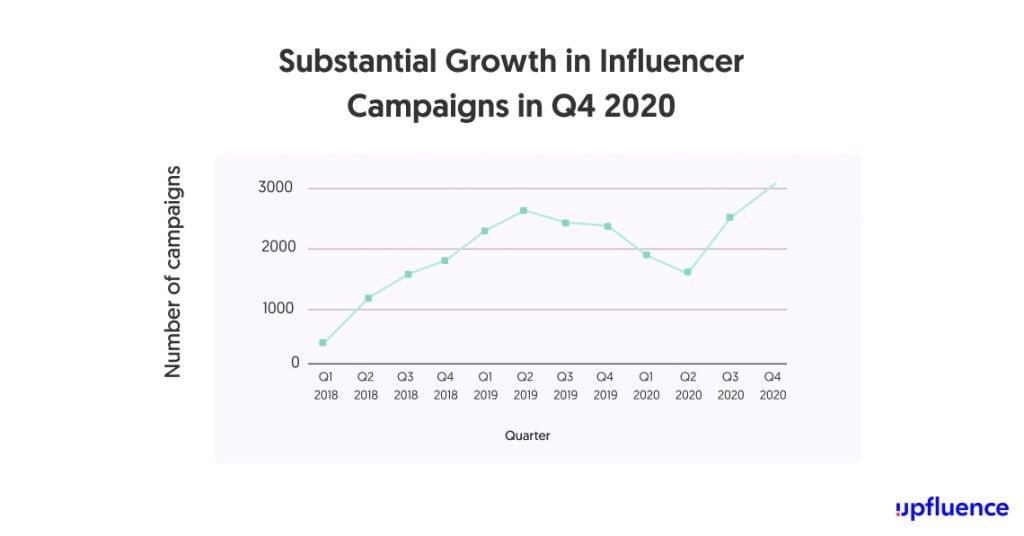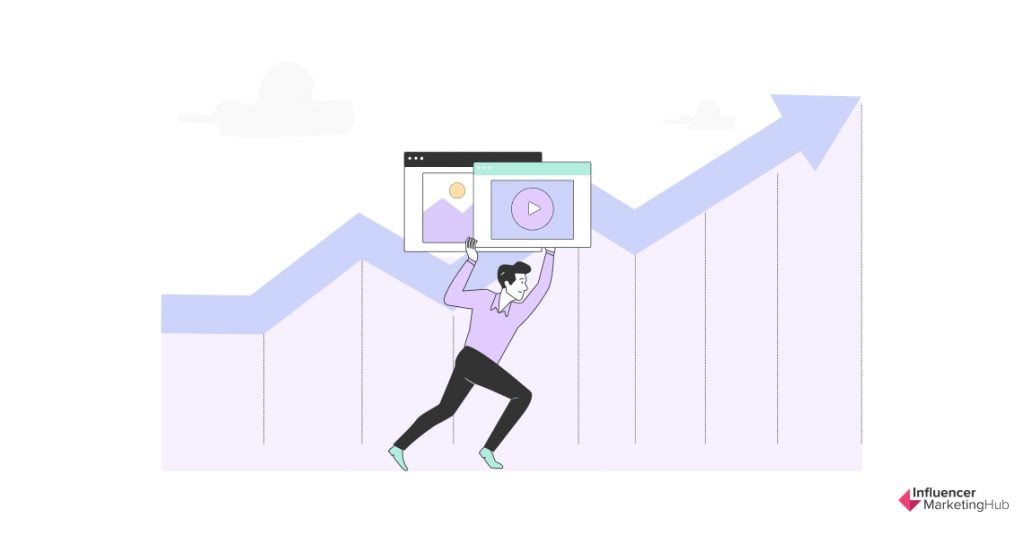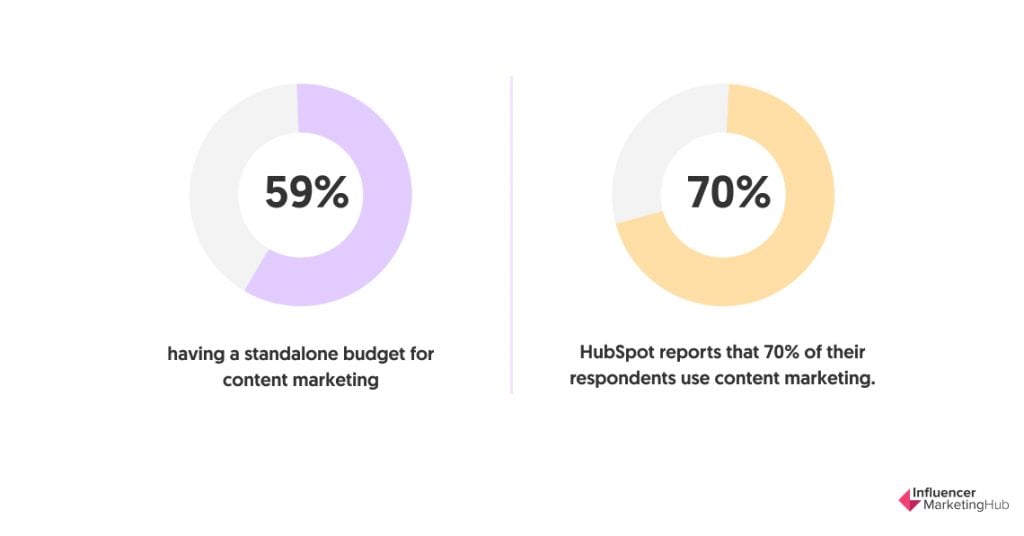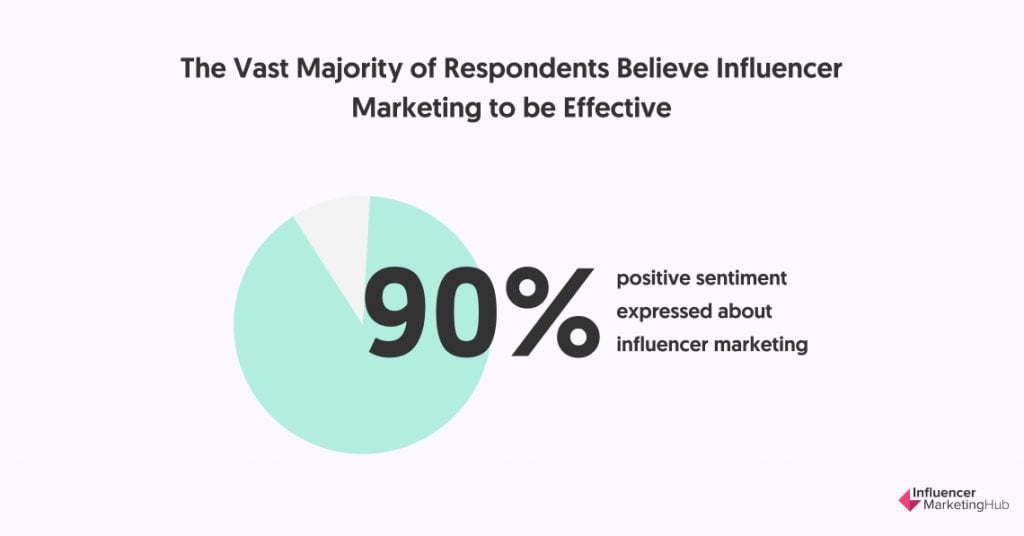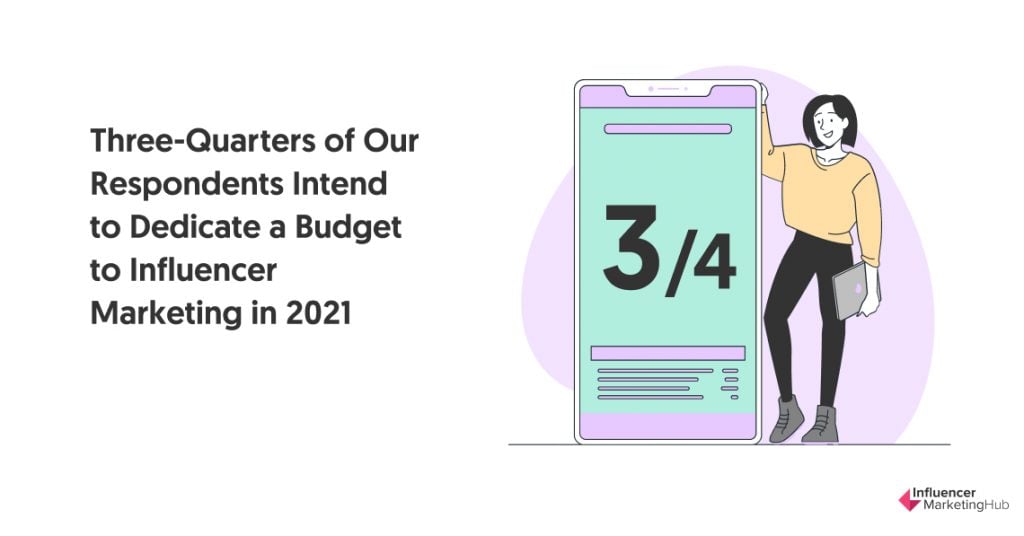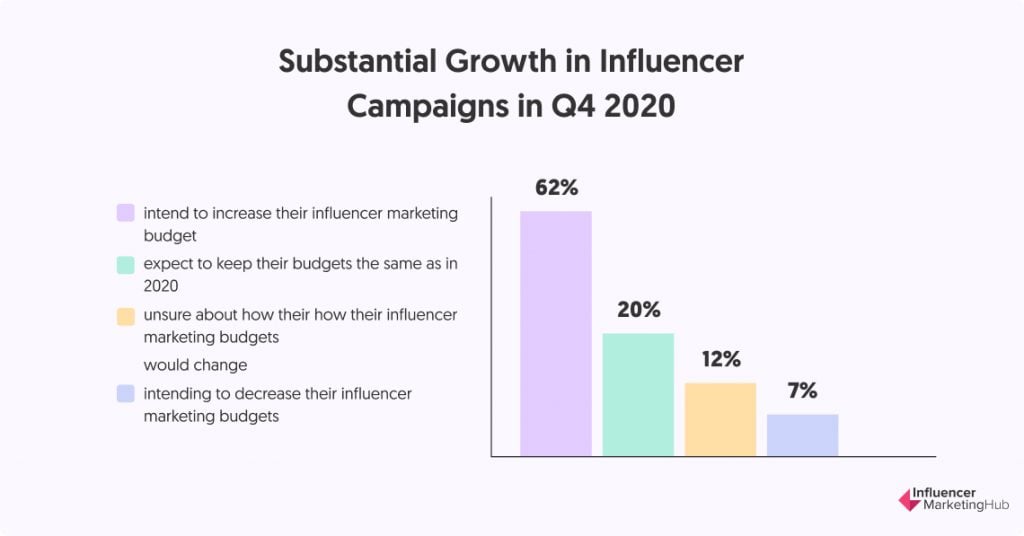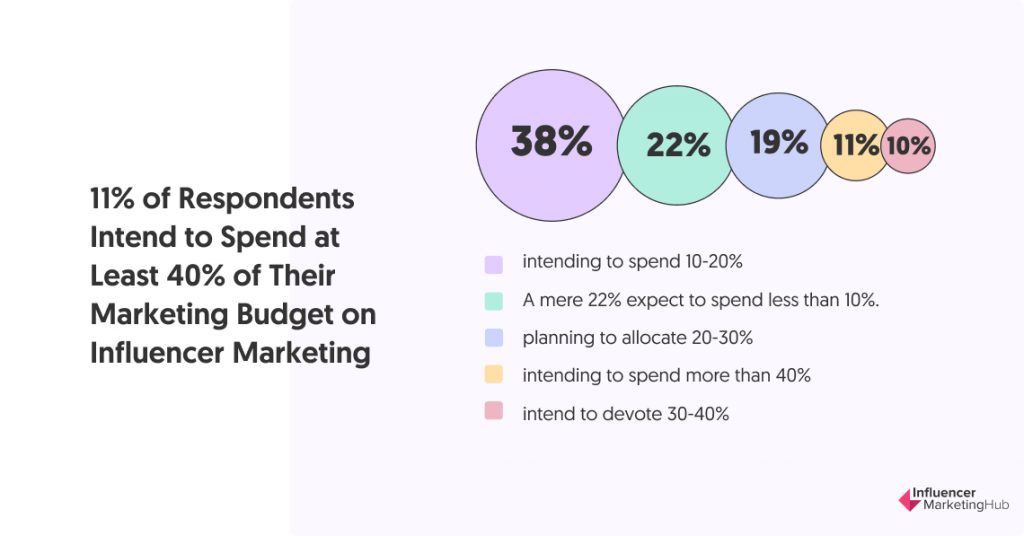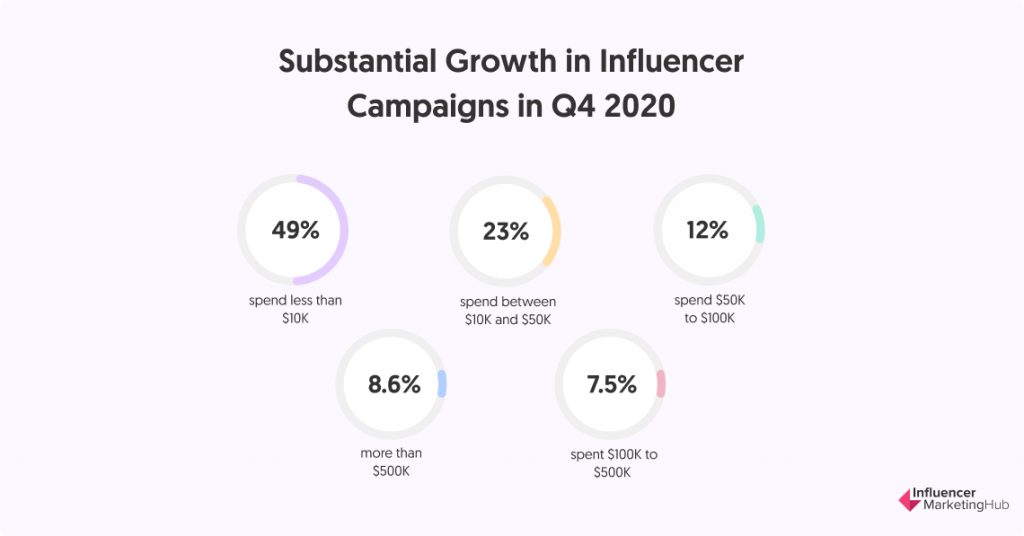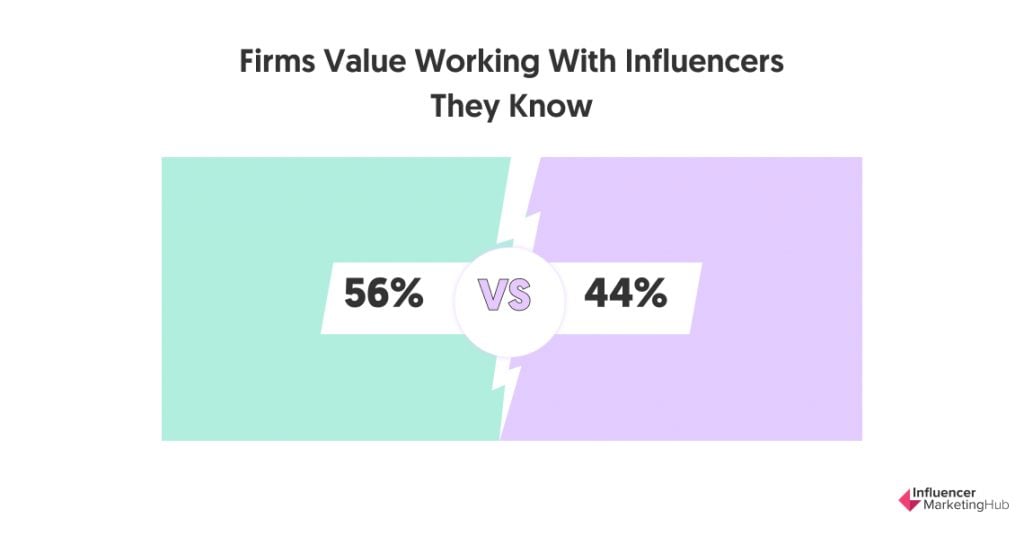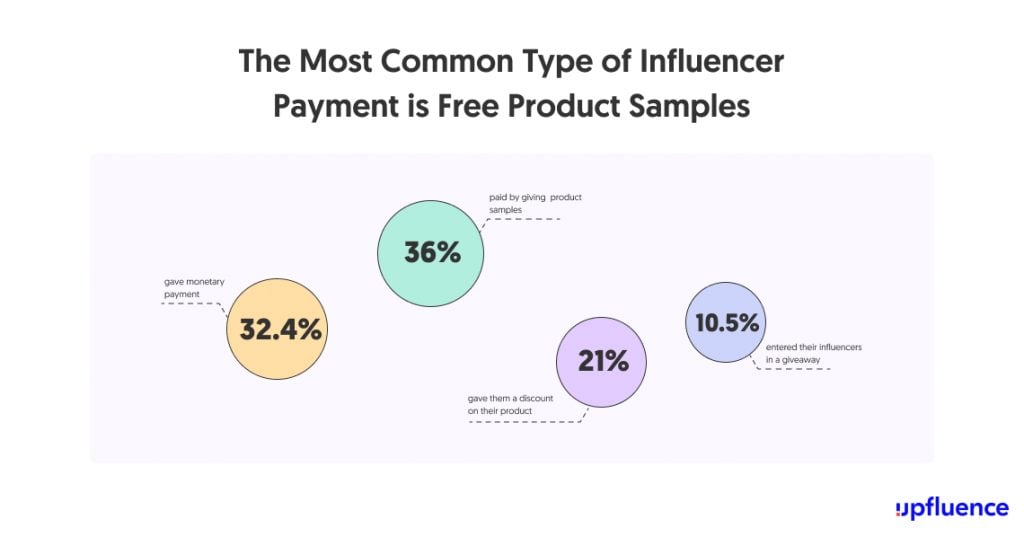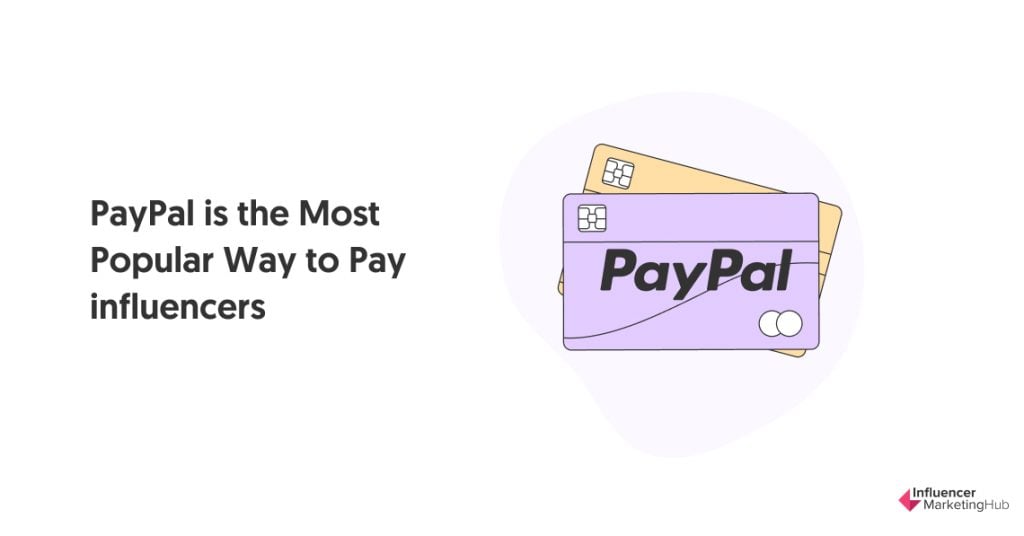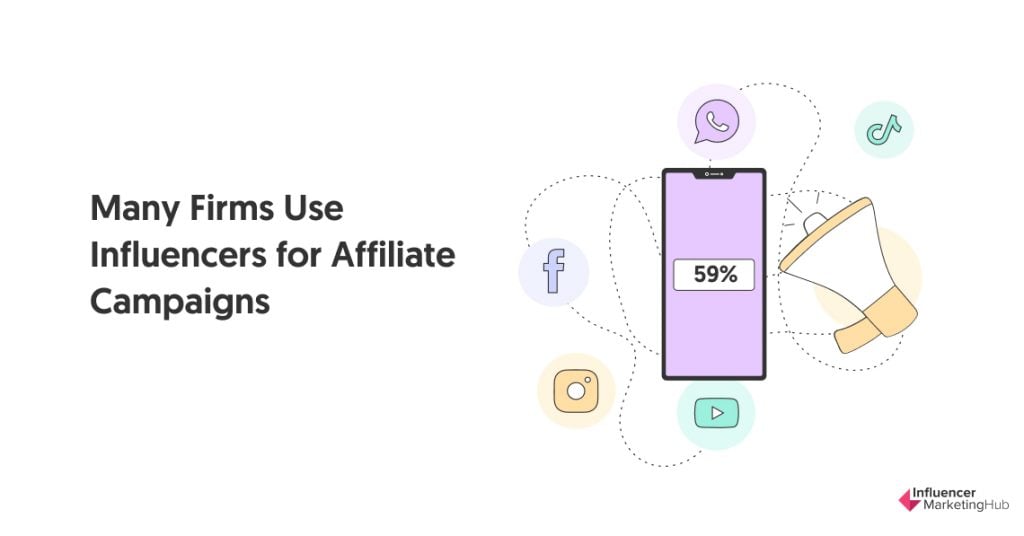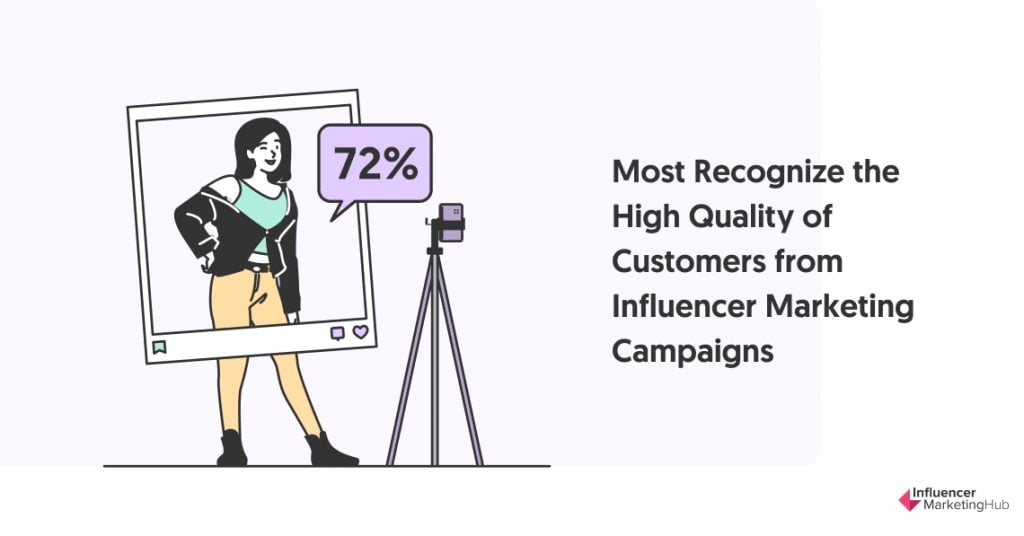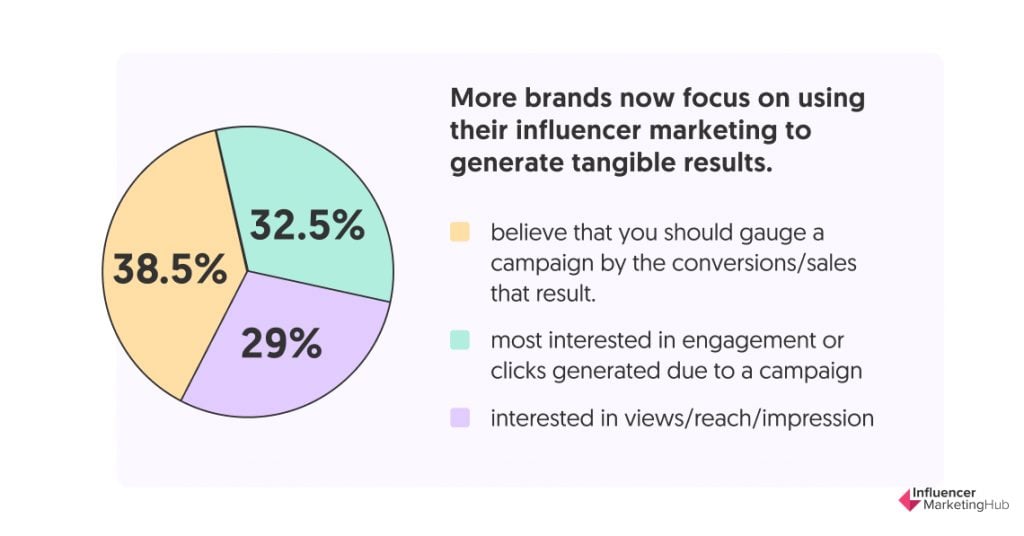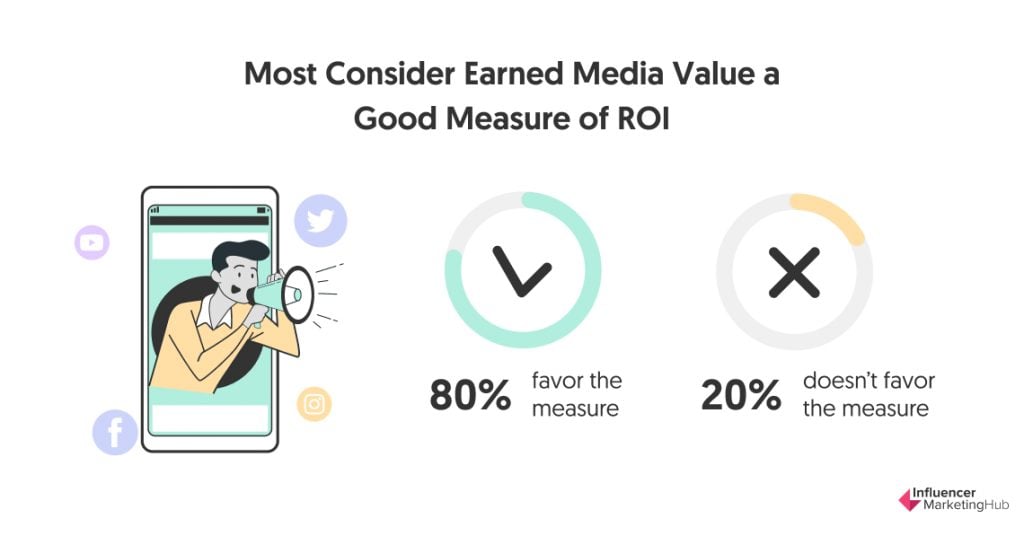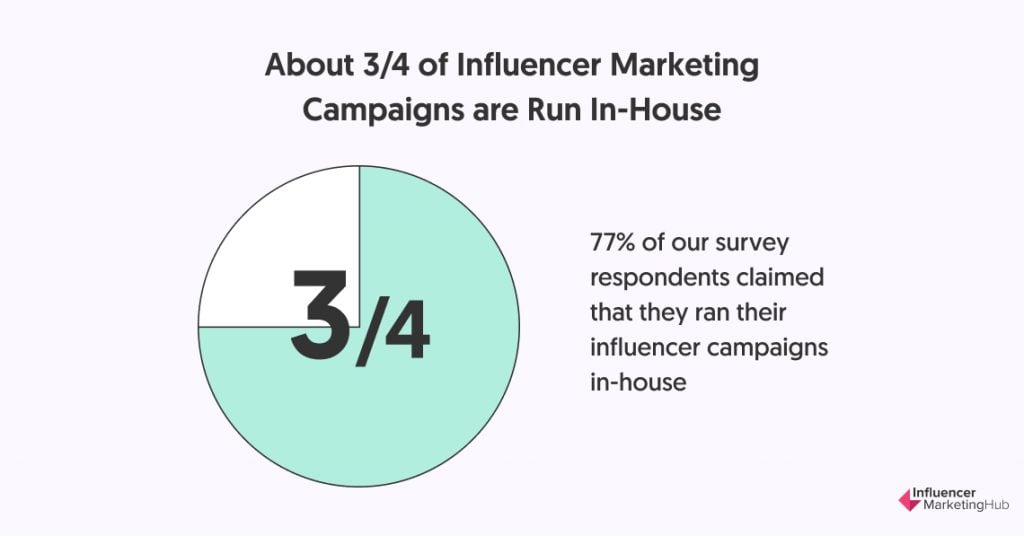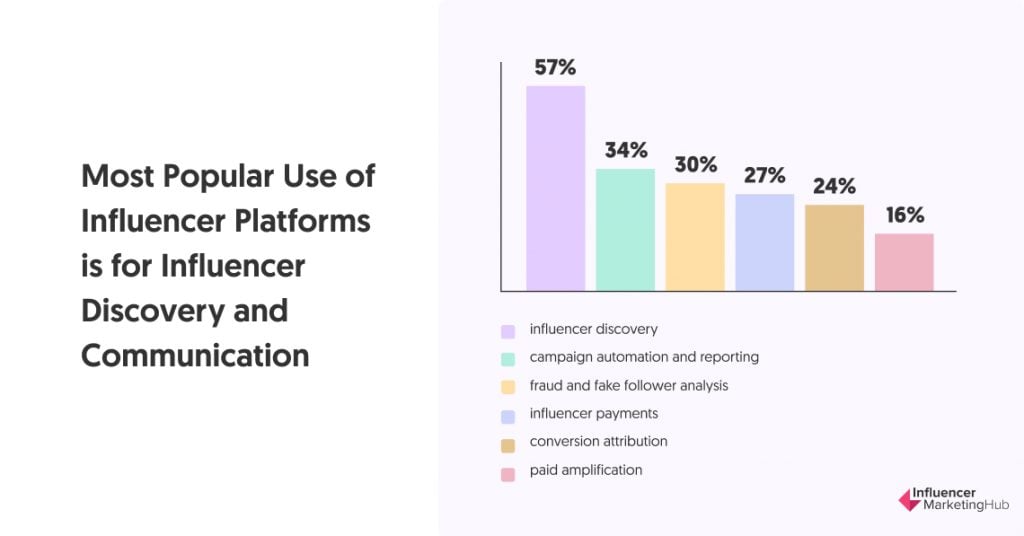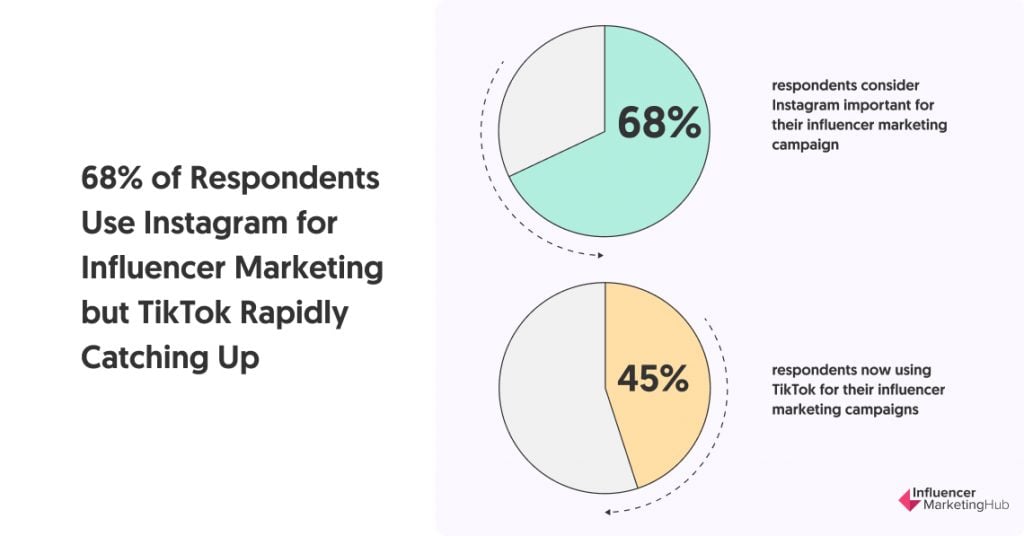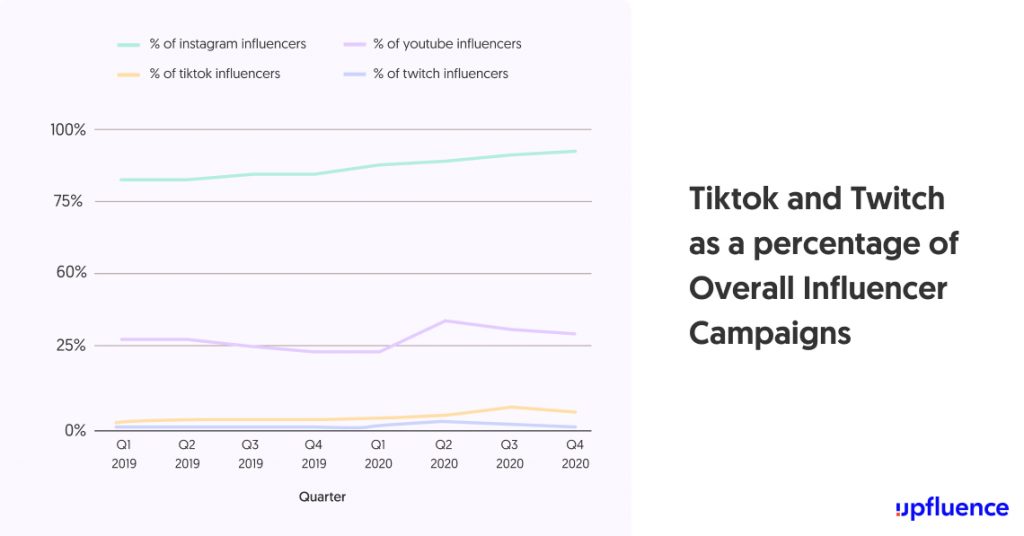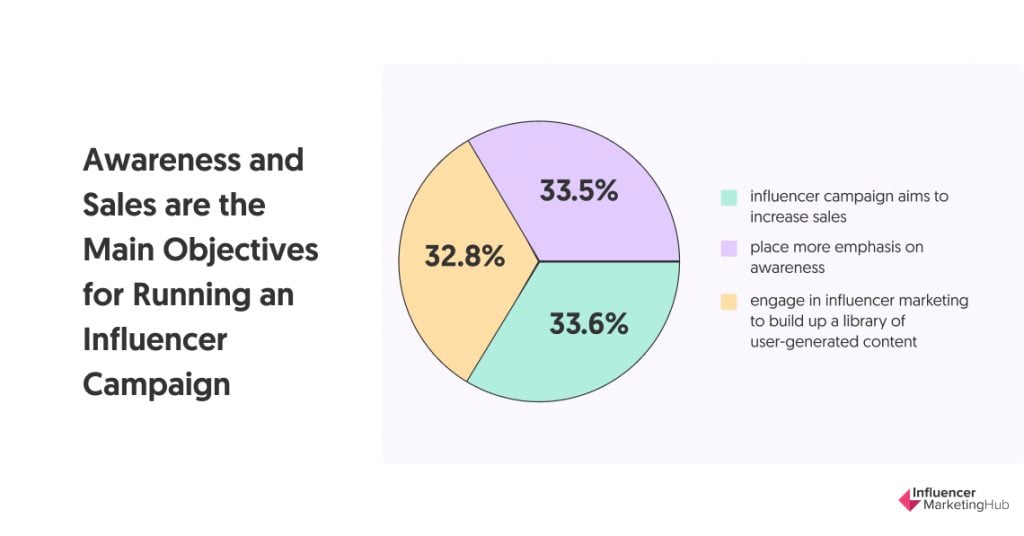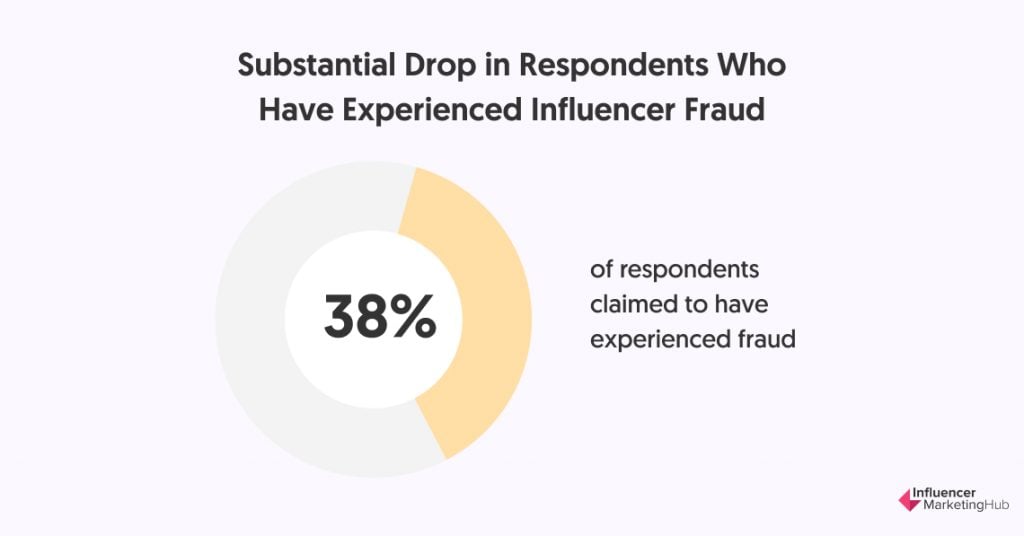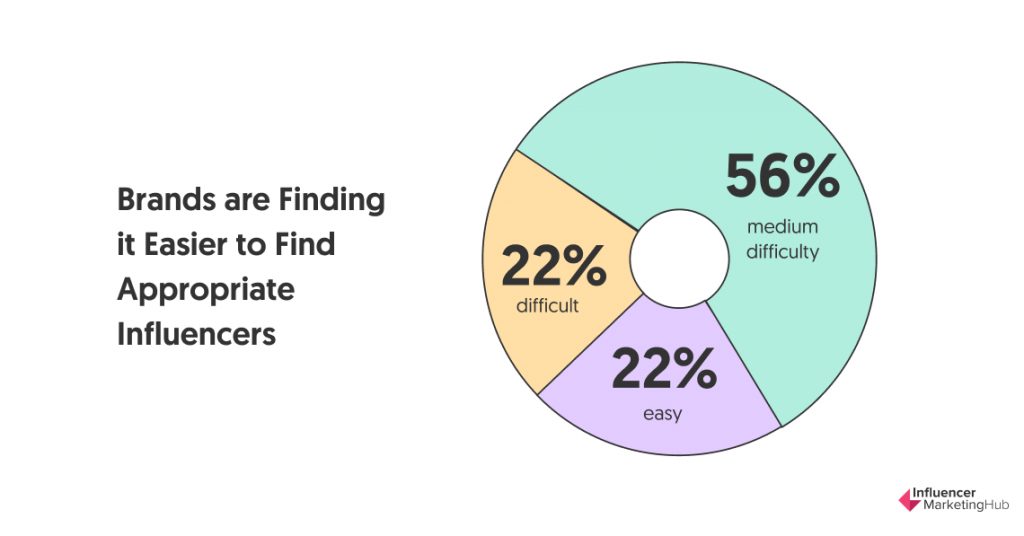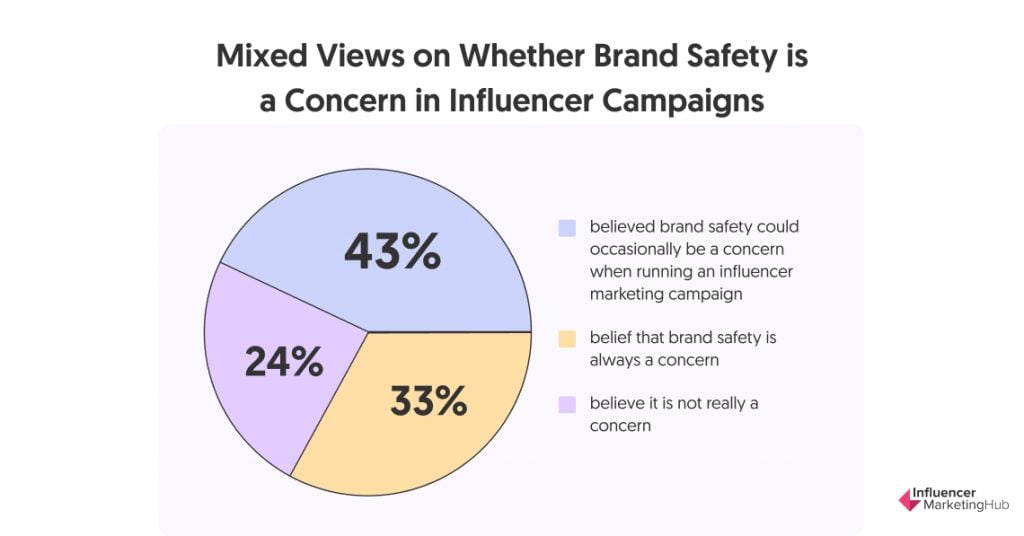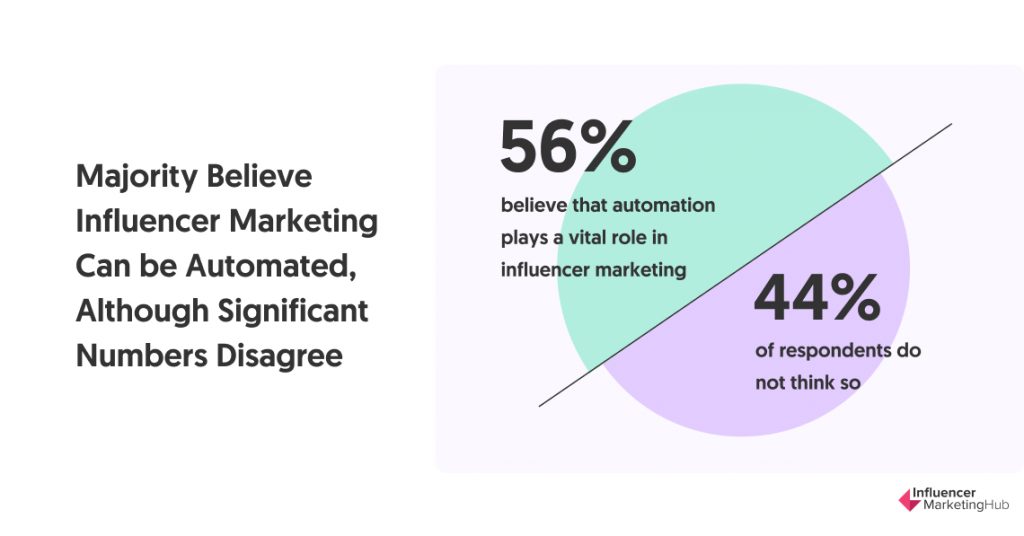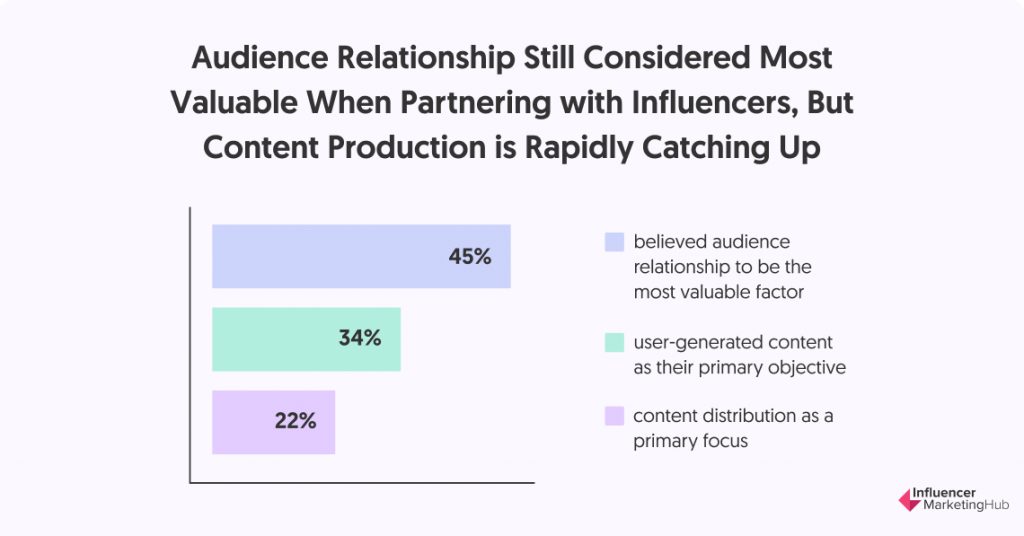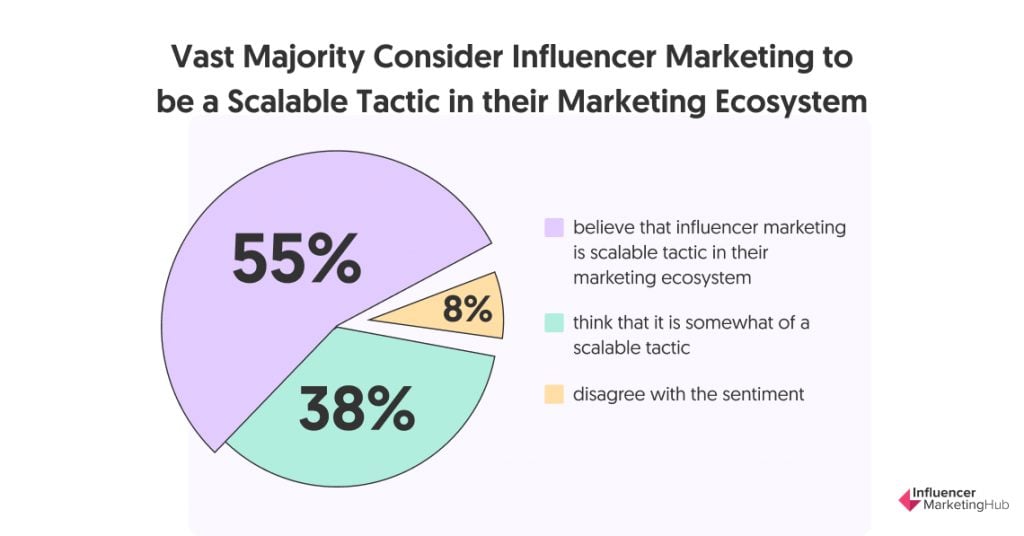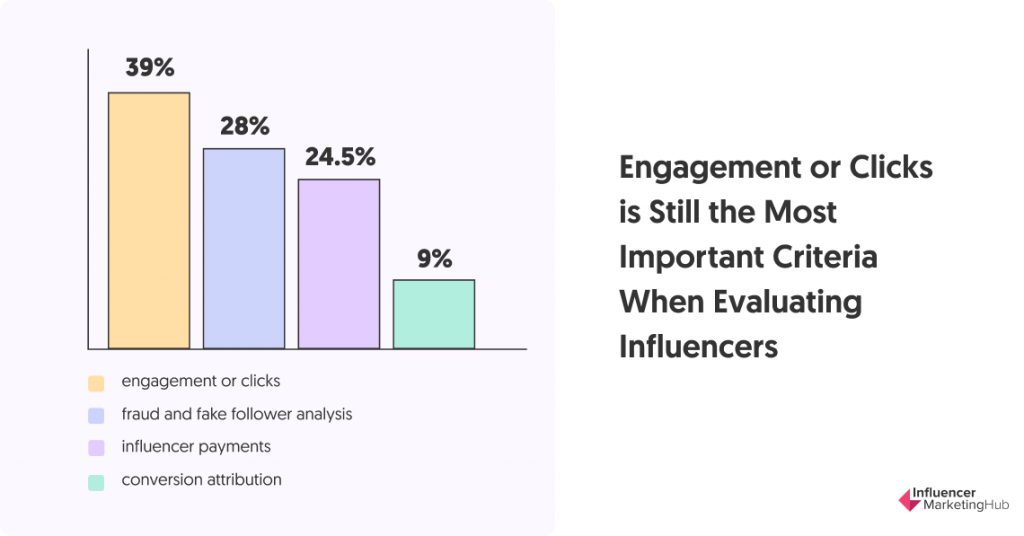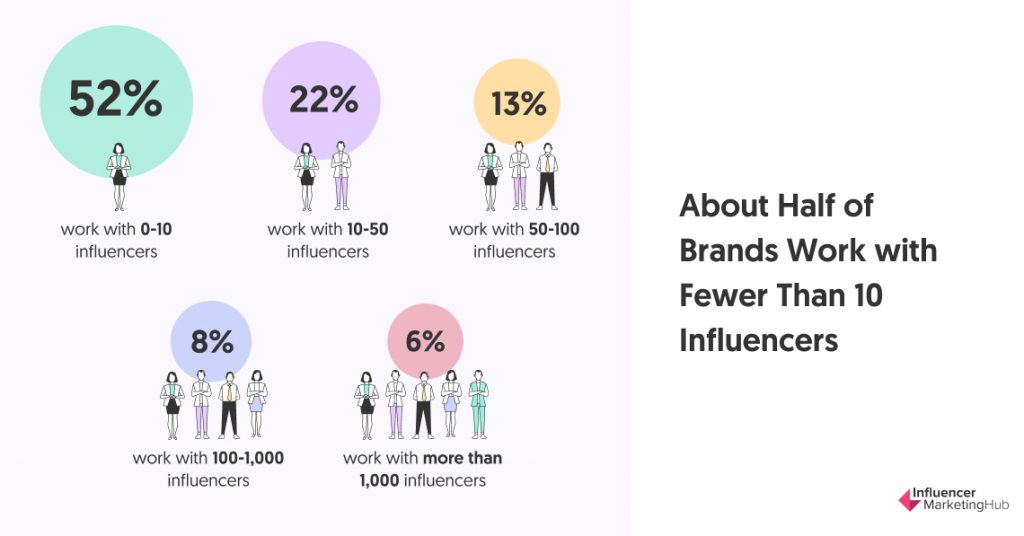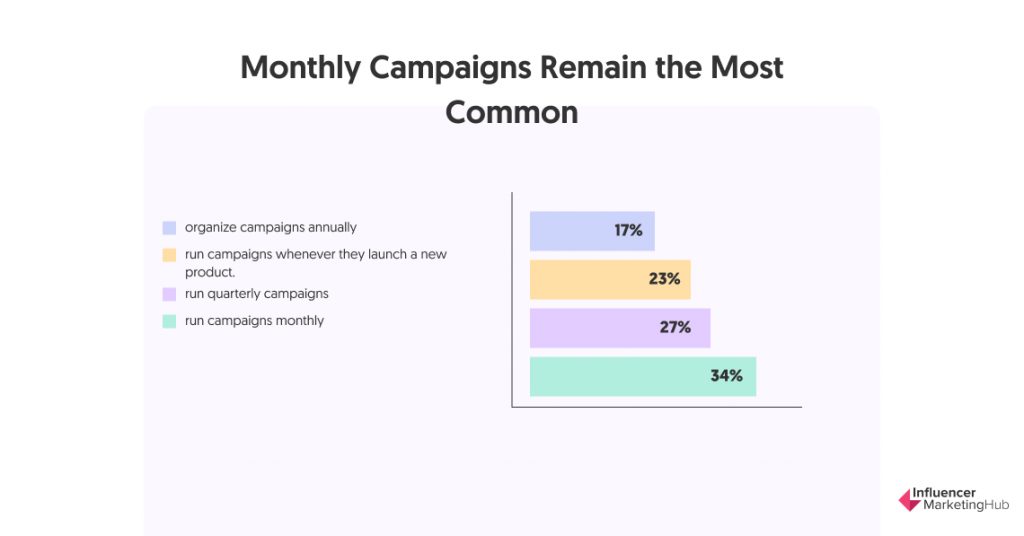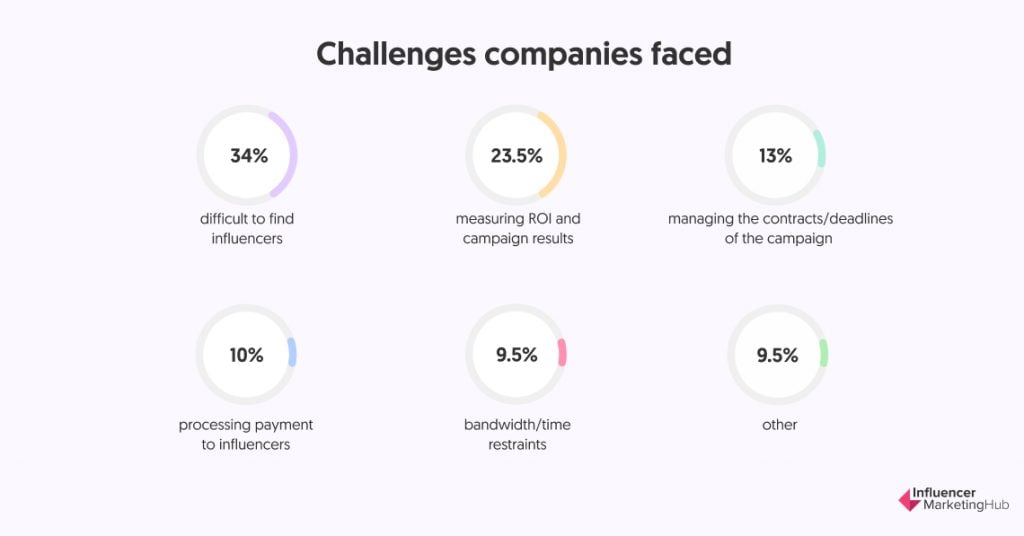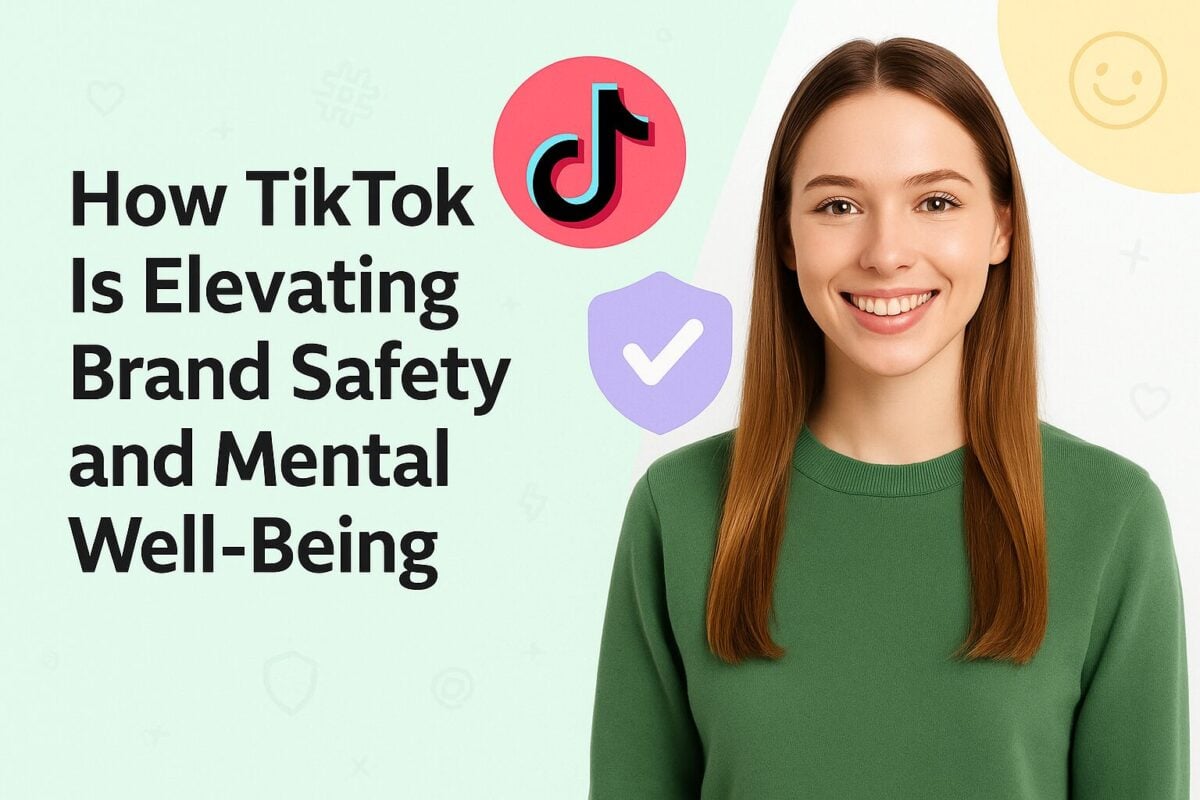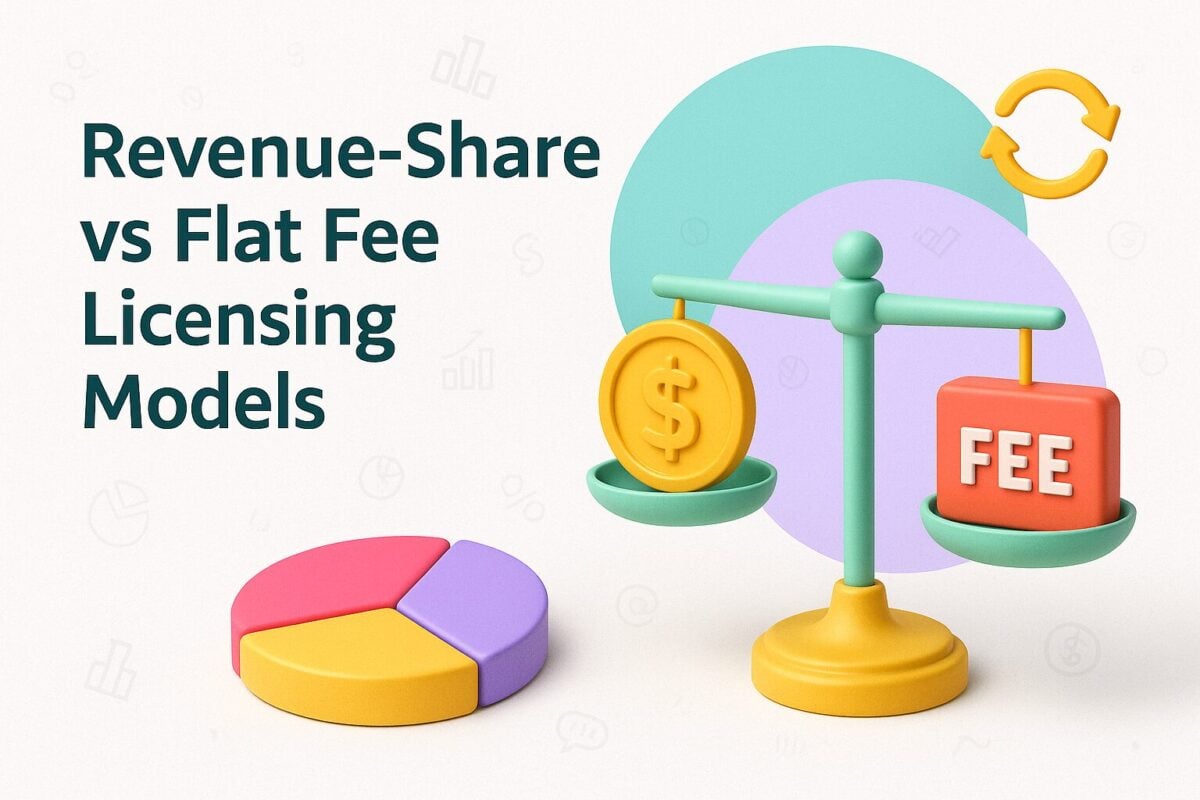We carried out our first influencer marketing survey in 2017, giving us an excellent insight into the state of the industry. We have repeated this exercise every year since, providing an annual insight into how marketing agencies, PR agencies, and brands see the state of influencer marketing.
UPDATE: CLICK HERE FOR THE LATEST BENCHMARK REPORT (2024)
In our Influencer Marketing Benchmark Report 2021, we surveyed more than 5000 influencer marketing agencies, brands, and other relevant professionals to determine their views and build insight into their thoughts on the industry. Following on from that year of horror, 2020, we knew that the results this year could be quite informative. Just a reminder that throughout 2020 we continually updated and expanded our Covid-19 Marketing & Ad Spend Impact Report. Surprisingly, however, most of the statistics are relatively similar, with the only major change being a significant increase in the use of TikTok for influencer marketing. There was a major slow down in influencer marketing spend from March - July 2020 as the pandemic unfolded, followed by a spike in influencer led campaigns from August onwards, as reported by most of our agency and platform partners.
In addition to the results from our survey, we include some other relevant statistics related to influencer marketing that have come about thanks to recent research. Many of these come courtesy of our partner Upfluence, who offer a smart influencer marketing platform with over 4 million creator profiles.
One thing is very clear from these results. Despite all the uncertainties caused by COVID in 2020, influencer marketing is still a highly popular and effective form of marketing. Indeed, we can look at it as being part of the mainstream marketing mix now. Although the media occasionally run reports from naysayers criticizing the industry, those who actively participate can clearly see influencer marketing's effectiveness. At least now, more people understand what influencer marketing is all about.
The State of Influencer Marketing 2021: Benchmark Report:
- Notable Highlights
- Survey Methodology
- Influencer Marketing Expected to Grow to be Worth $13.8 Billion This Year
- 240 More Platforms and Influencer Marketing Focused Agencies Created Last Year
- Better Engagement Rates for Micro-Influencers Than for the Superstars of Social Media
- Most Influencers Selected on Instagram and YouTube are Micro-Influencers. However, Larger Influencers Are Popular on TikTok
- Substantial Growth in Influencer Campaigns in Q4 2020
- Sizeable Increase in Content in Recent Years
- An Increasing Majority Have a Standalone Budget for Content Marketing
- The Vast Majority of Respondents Believe Influencer Marketing to be Effective
- Three-Quarters of Our Respondents Intend to Dedicate a Budget to Influencer Marketing in 2021
- 62% of Respondents Intend to Increase Their Influencer Marketing Spend in 2020
- 11% of Respondents Intend to Spend at Least 40% of Their Marketing Budget on Influencer Marketing
- Although Most Brands Spend Less Than $50K on Influencer Marketing, Nearly 9% Spend More than $500K
- Firms Value Working With Influencers They Know
- About Half of the Firms Working With Influencers Operate eCommerce Stores
- The Most Common Type of Influencer Payment is Free Product Samples
- PayPal is the Most Popular Way to Pay influencers
- Many Firms Use Influencers for Affiliate Campaigns
- Most Recognize the High Quality of Customers from Influencer Marketing Campaigns
- 2/3 Measure the ROI on Their Influencer Marketing
- The Most Common Measure of Influencer Marketing Success is Conversions / Sales
- Most Consider Earned Media Value a Good Measure of ROI
- 83% of Firms Take Their Influencer Marketing Spending from Their Marketing Budget
- About 3/4 of Influencer Marketing Campaigns are Run In-House
- Most Popular Use of Influencer Platforms is for Influencer Discovery and Communication
- 68% of Respondents Use Instagram for Influencer Marketing but TikTok Rapidly Catching Up
- Huge Growth of TikTok and Twitch Influencer Marketing in 2020
- Tiktok and Twitch as a percentage of Overall Influencer Campaigns
- Awareness and Sales are the Main Objectives for Running an Influencer Campaign
- Influencer Fraud is Still of Concern to Respondents
- Substantial Drop in Respondents Who Have Experienced Influencer Fraud
- Brands are Finding it Easier to Find Appropriate Influencers
- Mixed Views on Whether Brand Safety is a Concern in Influencer Campaigns
- Majority Believe Influencer Marketing Can be Automated, Although Significant Numbers Disagree
- Audience Relationship Still Considered Most Valuable When Partnering with Influencers, But Content Production is Rapidly Catching Up
- Two-Thirds of Respondents Prefer Their Influencer Marketing to be Campaign-Based
- Vast Majority Consider Influencer Marketing to be a Scalable Tactic in their Marketing Ecosystem
- Engagement or Clicks is Still the Most Important Criteria When Evaluating Influencers
- About Half of Brands Work with Fewer Than 10 Influencers
- Monthly Campaigns Remain the Most Common
- Finding Influencers Remains the Greatest Challenge for Those Who Run Campaigns In-house
Notable Highlights
- Influencer Marketing Industry is set to grow to approximately $13.8 Billion in 2021
- More than 240 new influencer marketing agencies and influencer platforms established in 2019
- The majority (59%) admit to having a standalone budget for content marketing, and 75% of them now intend to dedicate a budget to influencer marketing in 2021
- 90% of our survey respondents believe influencer marketing to be an effective form of marketing
- The majority of brands use the same influencers across different campaigns
- Brands still tend to give away free product samples (or give discounts on more expensive products) rather than paying cash to their influencers
- 67% of our respondents measure the ROI from their influencer campaigns
- The most common measure of influencer marketing success is conversions/sales
- 83% of firms take their influencer marketing spending from their marketing budget
- 67% of respondents use Instagram for influencer marketing, but there has been a colossal increase in TikTok influencer marketing
- Influencer fraud is still of concern to respondents, but less so than in the past
- Far fewer respondents have experienced influencer fraud that previously
- 67% of respondents prefer their influencer marketing to be campaign-based rather than always-on
- Finding influencers remains the most significant challenge for those who run campaigns in-house but is becoming less of a problem
Survey Methodology
We surveyed just over 5000 people from a range of backgrounds. Although we had to remove some responses due to a lack of clarity, the 2021 survey is our largest yet, with a 25% increase in respondents compared to last year's study.
36% of our respondents considered themselves brands (or brand representatives). 32% work at marketing agencies (including those specializing in influencer marketing), and 4% are PR agencies. The remaining 29% we merge as Other, representing a wide range of occupations and sectors.
Despite the increase in survey respondents from last year, the ratio of B2B and B2C businesses remained unchanged. 70% of those surveyed focus on the B2C sector, with the remaining 30% running campaigns for firms in the B2B area.
The most popular vertical represented was once again Fashion & Beauty (25% of respondents), although we found changes after this. Health & Fitness now comes second with 13%. In the year of COVID, it is perhaps no surprise that our Travel & Lifestyle respondents fell to 10%, closely followed by Gaming at 9%. Family, Parenting & Home (7%) and Sports (6%) are the other sectors separately shown. The reduction in Sports (and increase in Gaming) are also probably a result of COVID. The remaining 29%, grouped as Other, covers every other vertical imaginable. Due to our survey sample size, the proportions of each industry vertical represented here will likely be typical of influencer marketing users in general.
47% of our respondents came from the USA, 11% Europe, 13% Asia (APAC), 5% Africa, with 19% describing their location as Other.
The bulk of our respondents came from relatively small organizations, with 45% representing companies with fewer than ten employees. 22% had 10-50 employees, 12% 50-100, 10% 100-1,000, and 12% coming from large enterprises with more than 1,000 employees. Overall, however, there are slightly more respondents from larger organizations than last year, which might have had a small impact on the comparative results.
Influencer Marketing Expected to Grow to be Worth $13.8 Billion This Year
Despite initial concerns that influencer marketing (indeed, all marketing) might decrease due to COVID19, it has increased in reality. Sure some industries, such as tourism and airlines, have had to retrench dramatically, but many others have adjusted their models to survive in the COVID (and post-COVID) world.
People now spend considerably more time online than previously. Businesses have had to upgrade their websites to cope with increased demand. If you look back through past versions of this Benchmark Report, you will have noticed that actual and estimated influencer marketing has grown dramatically over the last few years. Coronavirus has accelerated that growth in 2020, and this is estimated to continue in 2021.
From a mere $1.7 billion in 2016, influencer marketing is estimated to have grown to have a market size of $9.7 billion in 2020. This is expected to jump to $13.8 billion in 2021.
240 More Platforms and Influencer Marketing Focused Agencies Created Last Year
As influencer marketing has matured as an industry, it has attracted support companies and apps to simplify the process for both brands and influencers. Organic influencer marketing can be a slow and tedious process, particularly when finding and wooing influencers to promote your company's products or services.
240 new influencer marketing-focused platforms and agencies entered the market over the last 12 months. This is down on last year's 380, but that may simply indicate the market becoming saturated, with influencer marketing now commonplace. It is still one of the largest increases over the years and takes the total influencer agencies and platforms to 1360.
Back in 2015, there were just 190 influencer platforms and agencies. This grew to 335 in 2016, 420 in 2017, 740 in 2018, and 1120 in 2019 –nearly three times the number that existed just two years previously.
Better Engagement Rates for Micro-Influencers Than for the Superstars of Social Media
Recent Upfluence data shows better engagement rates for smaller influencers than for larger ones. Upfluence uses slightly different definitions for influencer types than what we usually do on the Influencer Marketing Hub, so in the following data, consider the different kinds of influencer as being:
- Micro-influencer: less than 15,000 followers
- Regular-influencer : between 15,000 and 50,000 followers
- Rising-influencer : between 50,000 and 100,000 followers
- Mid-influencer : between 100,000 and 500,000 followers
- Macro-influencer : between 500,000 and 1,000,000 followers
- Mega-influencer : more than 1,000,000 followers
The pattern is the same across Instagram, YouTube, and TikTok (and probably most other social platforms too).
For example, micro-influencers on Instagram have an average engagement rate of 3.86%, and that rate falls at every level of influencer, bottoming out at 1.21% for mega-influencers. Similarly, although all engagement rates are low on YouTube, there is a noticeable difference between the 1.64% average engagement of micro-influencers and the mega-influencers' 0.37% rate. It is on TikTok that you notice the most significant difference, however. Micro-influencers receive a whopping 17.96% engagement on TikTok, compared to 4.96% for Mega-influencers.
TikTok engagement is far higher for influencers of any size compared to their Instagram or YouTube counterparts.
Most Influencers Selected on Instagram and YouTube are Micro-Influencers. However, Larger Influencers Are Popular on TikTok
Using the same definitions for influencer sizes used in the above statistic, we see some variations in influencer selection across the social networks (as shown by Upfluence customers).
On Instagram, there is a clear preference (57.78%) for micro-influencers, followed by 23.57% for regular influencers. All other influencer types cater for less than 10% of all influencers selected by Upfluence customers. Macro-influencers make a tiny 1.40% (even smaller than the 1.55% who prefer mega-influencers). The trend of having more mega-influencers than macro-influencers occurs across all three social networks, probably reflecting the fact that there are more mega-influencers because there is no maximum number of followers to qualify for that category.
YouTube also shows how essential micro-influencers are to brands, with 51.37% of Upfluence's YouTube clients working with micro-influencers. Surprisingly mid-influencers (16.43%) are the second most popular influencer type on YouTube. Again, mega-influencers (4.98%) make the smallest percentage.
TikTok follows a different pattern, however. Despite other statistics indicating that engagement on TikTok is highest for micro-influencers, Upfluence's clients have tended to go for larger influencers. Indeed, the most popular type of TikTok influencer on Upfluence are mid-influencers (32.55%), and micro-influencers make a mere 10.81%.
Substantial Growth in Influencer Campaigns in Q4 2020
Despite there being concern that COVID would cut back influencer campaigns, Upfluence data suggest that this only happened short-term. 2018 had seen substantial growth from 590 campaigns in Q1 to 1652 in Q4. This continued in 2019, reaching 2110 campaigns in Q4
Sure, COVID and lockdowns had an initial effect during Q1 and 2 2020, with 1945 campaigns in Q1 2020 falling further to 1575 in Q2. Things changed substantially in the second half of 2020, however. Influencer campaigns rose dramatically to 2163 in Q3, with an even larger jump in Q4 to 2901.
Sizeable Increase in Content in Recent Years
We asked our respondents whether they had increased content output over the last two years. A massive 80% of them admitted to having upped the amount of content they produced. While this is down on last year's 84%, remember that these figures are cumulative. 75% of the respondents of the 2019 survey had also said they had increased content.
Clearly, many firms now realize the insatiable demand for online content and have increased their content marketing accordingly. Judging by the recent uptake in influencer marketing over the last few years, much of this increase in content must be created and delivered by influencers on behalf of brands.
An Increasing Majority Have a Standalone Budget for Content Marketing
The majority (59%) admit to having a standalone budget for content marketing. This is up from the 55% figure in our 2020 survey.
Although these figures are over 50%, they are surprisingly low, considering that most businesses claim to use content marketing. HubSpot reports that 70% of their respondents use content marketing.
Perhaps the discrepancy simply recognizes that some firms have a single marketing budget, rather than separating it into different types of marketing.
The Vast Majority of Respondents Believe Influencer Marketing to be Effective
Unsurprisingly, considering the overall positive sentiment expressed about influencer marketing, 90% of our survey respondents believe influencer marketing to be an effective form of marketing.
This statistic has hovered around the same level in each of our surveys. It is clear that most firms that try influencer marketing are happy with the results and are willing to continue with the practice. You may read the odd horror story in the media, but that is obviously the exception to the rule. Most influencer marketing partnerships work and are a win-win situation for all parties.
Three-Quarters of Our Respondents Intend to Dedicate a Budget to Influencer Marketing in 2021
The general satisfaction felt by firms that have engaged in influencer marketing seems to flow through to their future planning. 75% of our respondents indicated that they would be dedicating a budget to influencer marketing in 2021.
This is actually a drop compared to last year's 79% result, although still well up on the 37% who claimed they would dedicate a budget in 2017. This reduction could simply be a result of firms having to cut back their marketing because of COVID.
62% of Respondents Intend to Increase Their Influencer Marketing Spend in 2020
62% of those respondents who budget for influencer marketing intend to increase their influencer marketing budget over the next 12 months. An additional 20% indicate that they expect to keep their budgets the same as in 2020. A further 12% stated that they were unsure about how their influencer marketing budgets would change. This leaves a mere 7% intending to decrease their influencer marketing budgets.
While these figures are similar to the 2020 results, there are slightly fewer firms planning to increase their influencer marketing budgets. This is balanced by an increase in those planning on keeping their budgets the same. Although the number of firms planning to decrease influencer marketing is up, this is predominantly balanced by a reduction in the Unsure category. Once again, COVID is likely to play a role in these changes.
Overall, this is further proof that influencer marketing remains successful and shows no sign of disappearing or being just a fad. After a few years of robust growth in influencer marketing, you might have anticipated marketing budgets to have shifted to "the next big thing." However, that hasn't happened. Brands and marketers recognize the effectiveness of influencer marketing and are not searching for something new.
11% of Respondents Intend to Spend at Least 40% of Their Marketing Budget on Influencer Marketing
Influencer marketing is, of course, merely one part of the marketing mix. Most businesses balance their marketing budget across a wide range of media to reach the greatest possible relevant audience. However, the vast majority of firms intend to include some influencer marketing in their mix.
11% of respondents are clear fans of influencer marketing, intending to spend more than 40% of their marketing budget on influencer campaigns. This is a noticeable increase on 2020's 9%.
10% of respondents intend to devote 30-40% of their marketing budget to influencer marketing, with an additional 19% planning to allocate 20-30% of their total marketing spending to influencer marketing.
The most common percentage of marketing devoted to influencer marketing comes in the 10-20% range, with 38% of respondents intending to spend in this range. A mere 22% expect to spend less than 10%.
Although Most Brands Spend Less Than $50K on Influencer Marketing, Nearly 9% Spend More than $500K
Brands of all sizes engage in influencer marketing. Therefore, it should be no surprise to see quite some variation on what firms spend on the activity. 49% of the brands surveyed said they spend less than $10K annually on influencer marketing (notably higher than last year's 43%, perhaps a symptom of COVID). 23% spend between $10K and $50K. A further 12% spend $50K to $100K, 7.5% $100K to $500K, and 8.6% spend more than $500K. This latter statistic is notably higher than last year's 5%.
Clearly, the amount that a firm spends depends on its total marketing budget and the proportion it chooses to devote to influencer marketing. Those brands that opt to work with mega-influencers and celebrities spend more than brands that work alongside micro- or nano-influencers. COVID has the effect of increasing the extremes – firms have either decreased their influencer marketing noticeably or have put more emphasis on the practice and spend more on it.
Firms Value Working With Influencers They Know
We asked our respondents whether they had worked with the same influencers across different campaigns. The majority, 56% said they had, versus 44% who claimed to use different influencers for their campaigns (or perhaps had only had one campaign so far).
Clearly, brands prefer to build up relationships with existing influencers rather than going through the full influencer selection process every time they run a campaign. Of course, some firms will have a range of influencers they call upon depending on the nature of a particular campaign, depending on the products they are trying to promote, and the target market.
About Half of the Firms Working With Influencers Operate eCommerce Stores
Slightly more of our respondents operate eCommerce stores than those who don't. 50.7% of the respondents run eCommerce stores versus 49.3% not doing so. Allowing for a margin of error, this means that about half of our respondents operate an eCommerce store.
This is surprisingly high. Remember that our survey respondents come from various backgrounds – brands, marketing agencies, PR agencies, and "Other." Clearly, eCommerce is increasing in popularity for all types of businesses.
The Most Common Type of Influencer Payment is Free Product Samples
This statistic is probably the most surprising in this year's survey. 36% of respondents paid their influencers by giving them product samples. Indeed 21% merely gave them a discount on their product or services (presumably more expensive items). 10.5% entered their influencers in a giveaway. This means that only 32.4% of firms gave monetary payment to influencers.
While this is surprising on the surface, it probably indicates how many firms work with micro and nano-influencers. These relative newcomers are happy to receive payment in kind rather than cash. Presumably, it is mainly large firms with more sizable marketing budgets that pay influencers with money.
PayPal is the Most Popular Way to Pay influencers
Isolating those respondents who pay money to influencers, we asked them what their preferred payment method was. 42% chose PayPal, 31% a third-party payment service (for example, TransferWise), and 27% pay by wire transfer. In reality, this would very much depend on the location of the influencers. If they are based in a different country to where you operate from, PayPal or something like TransferWise is much easier than wire transfer.
Many Firms Use Influencers for Affiliate Campaigns
Another slightly surprising statistic is just how many firms use influencers in their affiliate marketing campaigns. Indeed 59% of all respondents claimed to do so. The advantages of using influencers for affiliate campaigns are obvious – you have a vastly larger audience to promote the affiliate products you sell. The most surprising aspect is just how many firms operate affiliate campaigns. We have previously written on How to Use Influencers to Power Up Your Affiliate Marketing.
Most Recognize the High Quality of Customers from Influencer Marketing Campaigns
Brands carry out influencer marketing for a range of purposes. Many campaigns are designed to increase brand awareness rather than encourage sales. Some customers are more lucrative for a business than others – they buy high-margin products and add-ons. In some cases, influencer marketing may bring new customers to the brand, but the additional spending may be less than the cost of running the campaign.
Our survey respondents are generally optimistic about the value of influencer marketing overall. Most agree that influencer marketing attracts high-quality customers. 72% believe that the quality of customers from influencer marketing campaigns is better than other marketing types. This is an identical result to last year's survey.
2/3 Measure the ROI on Their Influencer Marketing
We found that 67% of our respondents measure the ROI from their influencer campaigns. This is an improvement on last year's 65% result.
The 2020 results were something of an outlier result compared to previous years, all of which ranged from 67-70%. It is somewhat surprising that 33% of firms don't measure their ROI. You would think that every firm would want to know how effective their marketing spending is. It would be interesting to know if the bulk of the firms not measuring ROI are those who merely give influencers a product discount rather than paying them directly.
The Most Common Measure of Influencer Marketing Success is Conversions / Sales
This statistic mirrors last year's survey, which was a significant change from previous years. In 2019 and preceding years, influencer marketing measurement's focus was relatively evenly balanced between differing campaign goals, but Conversion/Sales was the least-supported reason. In 2020 and 2021, however, it has a clear, undisputed lead.
Influencer marketing is sufficiently widespread now that most businesses understand that the best way to measure your influencer marketing ROI is by using a metric that measures your campaigns' goals. Clearly, more brands now focus on using their influencer marketing to generate tangible results. 38.5% believe that you should gauge a campaign by the conversions/sales that result.
The remaining respondents have differing goals for their campaign, with 32.5% most interested in engagement or clicks generated due to a campaign (this topped earlier polls), and 29% interested in views/reach/impression (up from 27% last year).
Most Consider Earned Media Value a Good Measure of ROI
Earned Media Value has become more recognized in recent years as a good measure of influencer campaigns' ROI. We asked our respondents whether they considered it a fair representation. This year 80% favor the measure, as against 20% who don't. This is a 3% increase in favor of EMV compared to last year's result.
Earned Media Value provides a proxy for the returns on the posts that an influencer has historically given the firms they have worked with. It indicates what an equivalent advertising campaign would cost for the same effect. EMV calculates the worth you receive from content shared by an influencer.
The only negative of using this measure is that the calculation of EMV can be complicated. As such, it can sometimes be difficult for marketers to explain the concepts to their managers.
Another name used for earned media value when related to influencer marketing is influencer media value, which we have written about in What Exactly is an Influencer's Media Value.
Presumably, most of the 20% against using the statistic either don't understand it or struggle to communicate its worth to their management team.
83% of Firms Take Their Influencer Marketing Spending from Their Marketing Budget
This is another statistic showing little change over the last few years. 82.5% of the respondents in our survey take their influencer marketing spending from their Marketing Department's budget. The remaining 17.5% take their influencer marketing spending from their PR Department's funds.
Presumably, the firms in the minority group use influencer marketing predominantly for awareness purposes rather than as a direct means to sell their products or services.
About 3/4 of Influencer Marketing Campaigns are Run In-House
There is little change in this statistic compared to last year. COVID clearly hasn't made much impact here. 77% of our survey respondents claimed that they ran their influencer campaigns in-house, with the remaining 23% opting to use agencies or managed services for their influencer marketing.
In the past, firms found influencer marketing challenging because they lacked the tools to facilitate the process – organic influencer marketing can be very hit-and-miss, making it frustrating for brands trying to meet their goals. However, many firms now use tools (whether in-house or from third parties) to facilitate the process. For example, they use platforms like Upfluence to discover suitable influencers.
Some brands prefer to use agencies when working with micro and nano-influencers because the agencies are more experienced at working with influencers at scale. Also, larger firms use agencies for all of their marketing, including influencer marketing.
Most Popular Use of Influencer Platforms is for Influencer Discovery and Communication
The figures in this section show a percentage of those who answered that they use a third-party platform, not the percentage of all survey respondents as a whole.
Influencer platforms initially focused on offering tools to help with influencer discovery. Therefore, it should be no surprise that that is still the most popular use of influencer platforms - although this year's 57% is noticeably down on last year's 64% claiming to use a platform for influencer discovery and communications.
Other popular uses of the influencer platforms include campaign automation and reporting (34%), fraud and fake follower analysis (30%), influencer payments (27%), conversion attribution (24% - down noticeably from last year's 33%), and paid amplification (16%). An additional 17% of respondents use the platforms for some other type of service. This last figure is somewhat higher than last year's 13%, suggesting that the platforms are adding new services all the time.
68% of Respondents Use Instagram for Influencer Marketing but TikTok Rapidly Catching Up
Instagram remains the network of choice for influencer marketing campaigns. However, its dominance has fallen this year. 68% of our survey respondents consider Instagram important for their influencer marketing campaigns (down from last year's 80%).
The most significant change comes in second place, with 45% of respondents now using TikTok for their influencer marketing campaigns. Last year, TikTok didn't even warrant its own category and appeared as part of Other.
The percentages using the other social channels have also changed slightly compared to last year. 43% of the respondents tap into Facebook for their campaigns (46% last year), 36% YouTube (same as last year), 15% Twitter (22% last year), 16% LinkedIn - presumably those involved with B2B companies (16% last year), 8% Twitch (not shown separately last year) and a further 6% spread across the less popular or more specialist social networks.
Apart from TikTok's new-found prominence, the most notable differences are a decline in Twitter from 22% to 15%, an increase in LinkedIn from 12% to 16%, and a decrease in Other from 15% to 6%. Presumably, the fall in Other reflects the removal of Twitch and TikTok from this category.
Huge Growth of TikTok and Twitch Influencer Marketing in 2020
Upfluence has also seen an enormous rise in influencer marketing on TikTok and Twitch in 2020. All the figures in this section relate to influencers on the Upfluence platform. Both social networks saw some growth in influencer usage in 2019, Twitch rising from 9,990 influencers to 15,754 and TikTok rising from 16,394 to 35,528. However, 2020 with its lockdowns and other COVID-related issues, has seen Twitch influencers more than double from 15,754 to 36,663, and TikTok trebling from 35,528 to 106,104.
eCommerce has exploded since the start of COVID-19. Mckinsey reported that eCommerce saw ten years of growth in just 90 days. Brands are turning to influencer marketing more than ever, especially for eCommerce.
Tiktok and Twitch as a percentage of Overall Influencer Campaigns
Upfluence analyzed which social platforms brands are using for their influencer campaigns. Instagram continues to be the most used platform for influencer marketing, and has even seen a continuous increase over the last two years. At the end of 2020 96% of campaigns included instagram influencers.
This is followed by Youtube, which was used in 30% of campaigns in 2020. We see that the use of Youtube has fluctuated over the years. It was included in around 25% of campaigns in early 2019 but then dropped to 22% at the end of 2019, however this was followed by a sharp increase as of Q2 2020, at the time of the COVID-19 pandemic.
Tiktok, the most recent of platforms used for influencer marketing, has started to see an increase in usage. While in 2019 Tiktok influencers were only present in roughly 3.4% of campaigns, this doubled to 6.8% in 2020. Even though Tiktok only represents a small percentage of campaigns, the platform has proven to be an effective way of reaching younger audiences and we expect these numbers to continue to increase.
Twitch continues to be a small part of the influencer marketing mix with barely 2% of usage in influencer campaigns, yet this is a slight increase from 2019 when Twitch was used in 1.5% of campaigns. Like Tiktok, Twitch saw a peak in Q2 of 2020 which correlates with the beginning of the COVID-19 pandemic.
Awareness and Sales are the Main Objectives for Running an Influencer Campaign
This year, increased sales have just become the main objective for running an influencer campaign, but awareness is almost equal.
33.6% of our respondents claim their influencer campaign aims to increase sales. 33.5% place more emphasis on awareness. Slightly less popular, at 32.8%, is the group of respondents who engage in influencer marketing to build up a library of user-generated content. This percentage has risen quite noticeably as an objective, from last year's 24%.
In reality, allowing for sampling error, all three objectives are relatively equally popular.
Influencer Fraud is Still of Concern to Respondents
Every so often, mainstream media highlights influencer fraud. Luckily there are many tools to help detect fraudsters, reducing the effects of influencer fraud. Hopefully, it will soon merely be a chapter in the history of the industry.
However, influencer fraud has not been wholly vanquished from brands and marketers' minds yet. Possibly because of COVID concerns, there has been less publicity about influencer fraud this year. However, the fall from 68% to 67% is minor, so many firms still have worries about the practice.
Substantial Drop in Respondents Who Have Experienced Influencer Fraud
While the number of firms worrying about fraud only fell by a small amount, there was actually a significant drop in influencer fraud experienced over the last year. A year ago, 68% of respondents claimed to have experienced fraud. This year, only 38% claimed to have suffered.
This statistic is not really surprising. There has been much more publicity regarding influencer fraud in recent years, and there are more robust fake influencer tools now available. Maybe this is one reason for the increase in the use of third-party influencer tools and platforms.
Brands are Finding it Easier to Find Appropriate Influencers
We asked our respondents how they rated the difficulty of finding appropriate influencers to work their industry. 22% stated that it was very difficult (compared with 23% last year), and 56% suggested that they had medium difficulty (62% last year). An increasing 22% of respondents found finding appropriate influencers to be easy (14% last year).
The improvement in this statistic suggests that brands benefit from having more platforms and other influencer discovery tools available than ever (as well as influencer agencies for those wishing to outsource the entire process). As we have seen above, many firms reuse influencers with whom they have worked in the past. Many brands still struggle to find suitable influencers, however, perhaps because they are unwilling to pay for the relevant tools or platforms.
This statistic suggests that the influencer platforms still need to do a better job at marketing their services. Many potential customers still require assistance at discovering and then reaching out to potential influencers.
Mixed Views on Whether Brand Safety is a Concern in Influencer Campaigns
Over the last couple of years, a headline-making issue has been influencers acting in a way deemed inappropriate by the brands they represent. For example, Logan Paul faced criticism over a tasteless video he shared, and brands wondered whether they wanted to continue any connection with him. YouTube has also had to do significant damage control over the types of videos they allow and now have stricter rules for channels that target children. TikTok has also suffered backlash worldwide over concerns with its close ties with the Chinese government.
The key to a successful influencer marketing campaign is matching your brand with influencers whose fans are similar to your preferred customers and whose values match your own.
43% of our respondents believed brand safety could occasionally be a concern when running an influencer marketing campaign. 33% (down from last year's 34%) gave a more definitive belief that brand safety is always a concern.
The remaining 24% (up considerably from last year's 16%) believe it is not really a concern. Presumably, this last group has mastered the art of finding appropriate influencers for their brands, and they have little concern about a values mismatch.
Majority Believe Influencer Marketing Can be Automated, Although Significant Numbers Disagree
A contentious issue in influencer marketing is the amount of automation you can successfully use. Some people believe you can automate virtually the whole process from influencer selection through to influencer payment. Others value the personal touch and think influencer marketing is a hands-on process.
The majority of respondents (56%, up from 54%) believe that automation plays a vital role in influencer marketing. Those who disagree with this sentiment have a corresponding decrease in numbers, 44% now, compared to 45% a year ago.
Audience Relationship Still Considered Most Valuable When Partnering with Influencers, But Content Production is Rapidly Catching Up
45% of the survey respondents believed audience relationship to be the most valuable factor when considering collaborating with a particular influencer. This is well down on last year's 53%. They see little value in working with somebody who doesn't have a real influence on his/her audience, or perhaps has an excellent relationship – but they are the wrong audience for that brand.
The second most important factor is content production at 34% (noticeably up from last year's 27%). This will be particularly so for the group who considered user-generated content as their primary objective when running an influencer campaign in our earlier question on influencer campaign objectives.
The third popular reason favored by 22% of our respondents (up from 19%) found for working with influencers is distribution. Although this seems lower than the other options, it clearly connects with audience relationships – influencers use their audience to distribute content relating to a brand.
Two-Thirds of Respondents Prefer Their Influencer Marketing to be Campaign-Based
We have already seen that brands prefer cultivating long-term relationships with influencers. However, brands still think in terms of influencer marketing campaigns. Once they complete one campaign, they plan, organize, and schedule another one. Brands find that influencers they have worked for on previous campaigns come across as more genuine. Despite this, 67% of influencer marketing relationships are campaign-based, with only 33% "always on."
This could represent more brands entering the industry, dipping their toes in the water before making any long-term commitments to influencers. Alternatively, they may run multiple campaigns, selecting a preferred selection of influencers for each campaign, depending on the target market. Time will tell whether the nature of brand-influencer relationships changes in any significant way.
Vast Majority Consider Influencer Marketing to be a Scalable Tactic in their Marketing Ecosystem
One of the most significant advantages of influencer marketing over social activity using official company accounts is the ease with which you can scale the activity. If you want to create a bigger campaign, all you need to do is work with more influencers, particularly those with larger followings – as long as they remain relevant to your niche.
While organic influencer marketing may be challenging to scale, because of the time needed for influencer identification and wooing, there are now nearly 1000 platforms and influencer-focused agencies that businesses can use to help scale their efforts. Many of these operate globally and accept clients from anywhere in the world.
55% of our respondents believe that influencer marketing is definitely a scalable tactic in their marketing ecosystem, and a further 38% think that it is somewhat of a scalable tactic. Only 8% disagree with the sentiment. The vast majority recognize that influencer marketing is, to some extent, a scalable tactic in their marketing ecosystem.
Engagement or Clicks is Still the Most Important Criteria When Evaluating Influencers
We have regularly seen that businesses have a variety of objectives when they create influencer marketing campaigns. While the criteria by which our survey respondents evaluate influencers do not precisely match their differing goals, there is some clear correlation.
39% of our respondents rated engagement or clicks as their most important criterion (down 2% compared to last year). The next two categories have switched positions this year. 28% consider views/reach/impressions to be the most important (25% last year). 24.5% have opted for content type/category (26% last year). The remaining 9% of the respondents have different ideas on this topic, opting for Other as the most important criterion when evaluating influencers.
Although only 24.5% claim that content type/category is the most important criterion, this percentage may be understated. Most brands start their influencer search by narrowing down the possibilities to just influencers in a particular niche – a beauty brand is unlikely to work with a home improvement influencer, no matter how engaged he is with his followers. Similarly, it would be unwise for an automotive dealer to opt for a famous beauty influencer, even if she has millions of followers (unless they were promoting a car targeting women).
About Half of Brands Work with Fewer Than 10 Influencers
We asked those of our respondents who engaged in influencer marketing how many influencers they had worked with over the last year. 52% of them stated that they had worked with 0-10 influencers. A further 22% had worked with 10-50 influencers and 13% with 50-100 influencers.
Some brands, however, prefer influencer marketing on a large-scale, with 8% of those surveyed admitting to working with 100-1000 influencers. Incredibly, a further 6% had worked with more than 1,000 influencers. This is double last year's percentage. These brands clearly see the value of working with nano- or micro-influencers, using a large number of influencers with small but dedicated audiences to spread the word.
Monthly Campaigns Remain the Most Common
Although there is no set way to run an influencer campaign, monthly is still the most common frequency for our respondents.
Last year saw a movement towards quarterly campaigns, but that trend has reversed this year. Perhaps the uncertainties of COVID have led to firms preferring short campaigns they can change quickly if necessary.
Of those who operate discrete influencer campaigns, 34% (up from 33%) prefer to run them monthly. A further 27% (down from 30%) run quarterly campaigns, and 17% (up from 15%) prefer to organize campaigns annually. These later companies are probably brands that prefer the "always-on" approach to influencer marketing. The remaining 23% (up from 20%) take a different approach and only run campaigns whenever they launch a new product.
Finding Influencers Remains the Greatest Challenge for Those Who Run Campaigns In-house
We asked those survey respondents who ran campaigns in-house what they saw as the greatest challenges they faced. 34% found it most difficult to find influencers to participate in their campaigns. This is down somewhat from last year's 39%. This ties in with the similar concern they expressed to the previous question about the difficulty in finding appropriate influencers. Still, the reduction may indicate increased usage of platforms like Upfluence.
Other notable areas of concern included measuring ROI and campaign results (23.5% - didn't appear last year), managing the contracts/deadlines of the campaign (13% - well down on last year's 21%), processing payment to influencers (10%), and bandwidth/time restraints (9.5% - down from 16%). A further 9.5% of challenges can be grouped together as Other.


